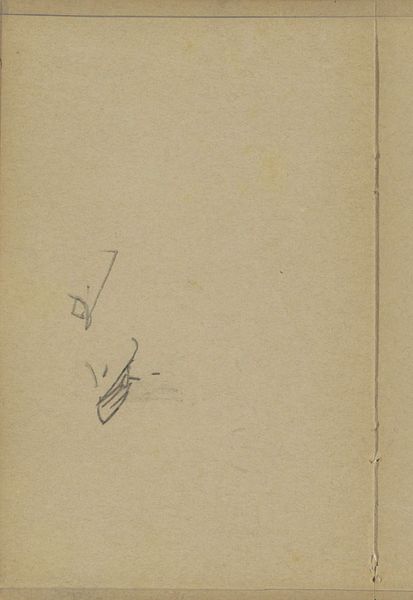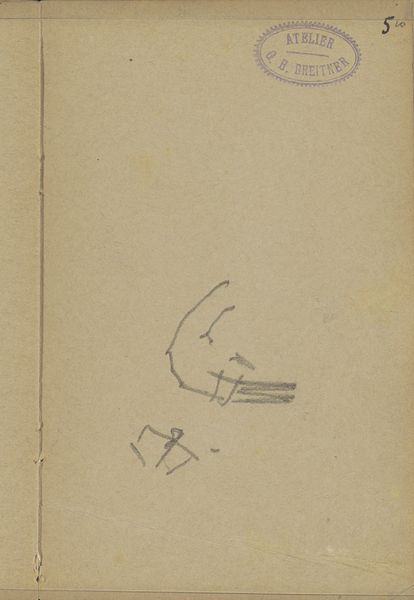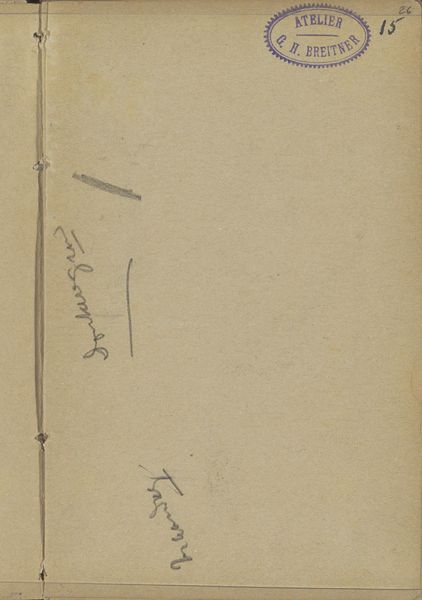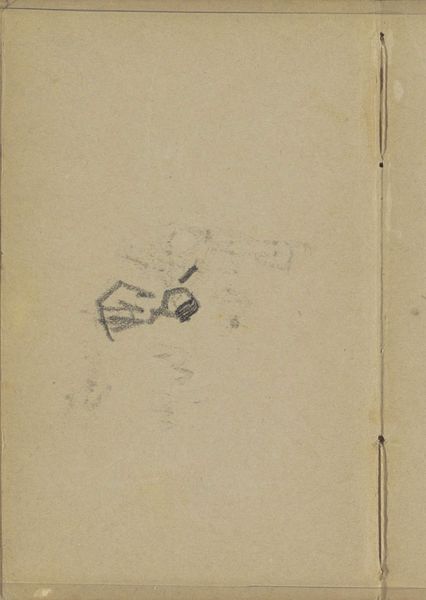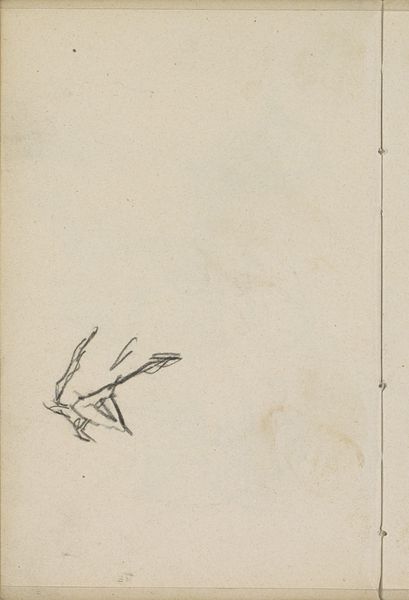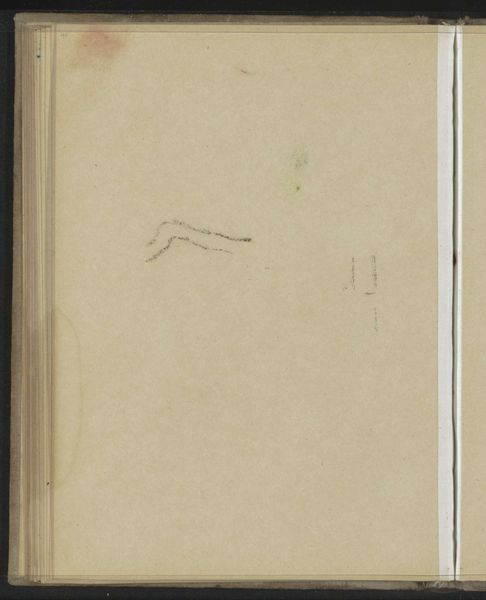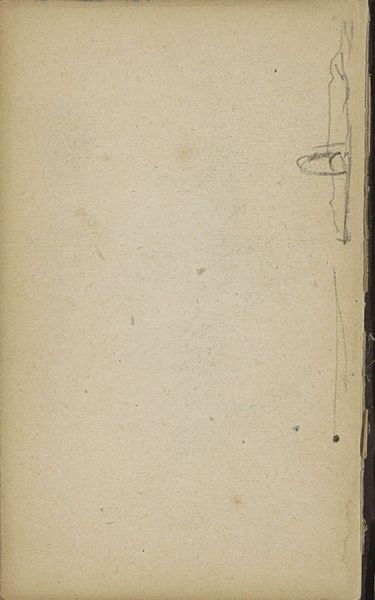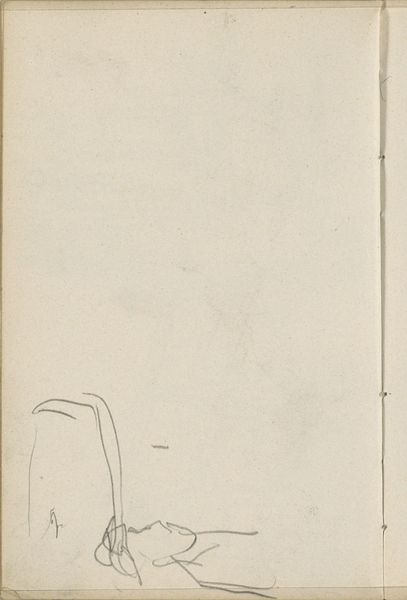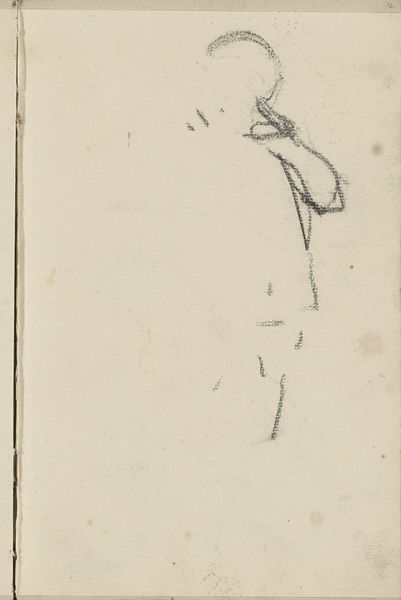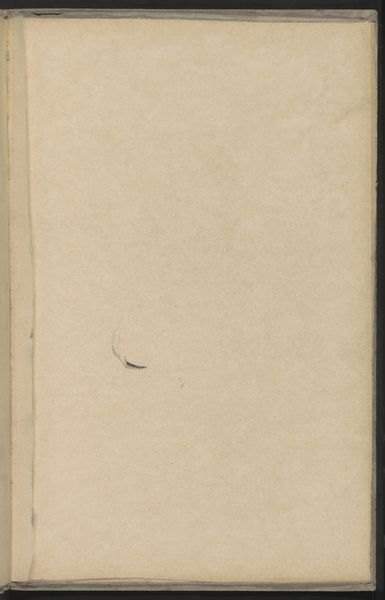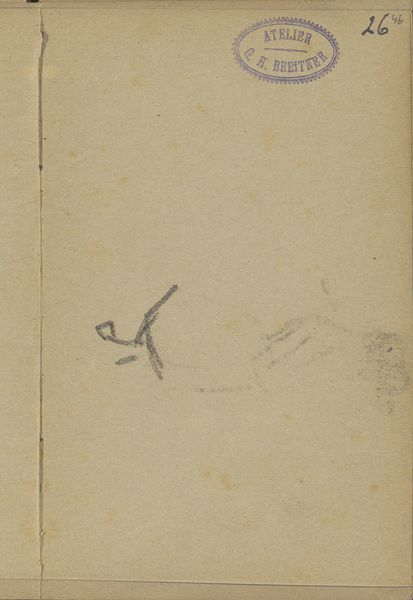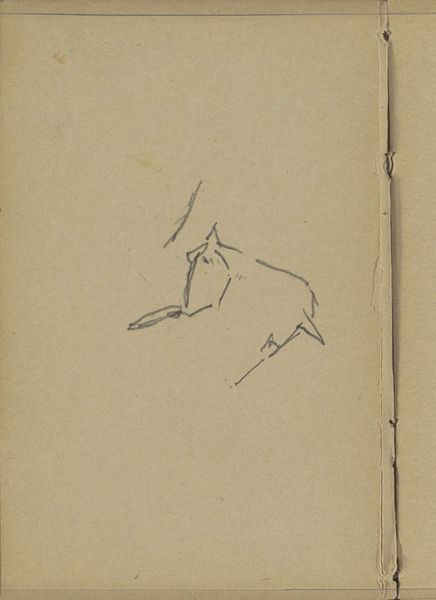
drawing, paper, pencil
#
portrait
#
drawing
#
aged paper
#
toned paper
#
light pencil work
#
impressionism
#
sketch book
#
hand drawn type
#
figuration
#
paper
#
personal sketchbook
#
idea generation sketch
#
pencil
#
ink colored
#
sketchbook drawing
#
sketchbook art
Copyright: Rijks Museum: Open Domain
Curator: The piece we’re looking at here is entitled "Studie," which translates simply to "Study." Created with pencil on paper between 1887 and 1891 by George Hendrik Breitner, it’s currently held in the collection of the Rijksmuseum. Editor: It appears almost like a page torn from a sketchbook, doesn’t it? Very pale and minimal—it feels tentative, like a half-remembered thought captured quickly. The toned paper amplifies this impression; it is reminiscent of something salvaged. Curator: It certainly bears the marks of a working document; there is evidence of the artist's stamp in the top corner, next to the number 80, then a fraction 32 on top. The page itself seems to have traces of an abandoned composition. The barely visible figural elements hints at his exploration with urban movement and portraiture at the time. This type of study can unveil how artists translated immediate surroundings to the canvas. Editor: I’m curious about the relationship between those faint lines and the surrounding void. It reads like an exercise in negative space. See how the suggestion of form allows our mind to almost create what's not physically there? Is that indeed his intention here? Curator: That’s quite perceptive. In sketches such as this, Breitner was not merely representing but almost conjuring a symbolic realm. Each sparse line may encode more than first meets the eye, functioning as anchors to experiences which we, now seeing, can still recognize. A sense of immediacy is apparent. I’m more curious what’s absent and deliberately not rendered! Editor: Agreed, the sparseness prompts contemplation and an acute appreciation of composition. Its materiality--the aged paper--infuses a tactile engagement that transports the viewer back to Breitner's immediate creative context. Such studies emphasize his artistic process itself. Curator: Absolutely. This study acts as a conduit, inviting us into the atelier of a fin-de-siècle artist, encouraging us to imagine his world, the subjects and his encounters, which shaped this composition’s embryonic existence. Editor: Looking closely really underscores how every line, however delicate, contributed significantly to the artwork’s overall mood. This study teaches us the art of reduction—using minimal elements to trigger maximal contemplation.
Comments
No comments
Be the first to comment and join the conversation on the ultimate creative platform.
